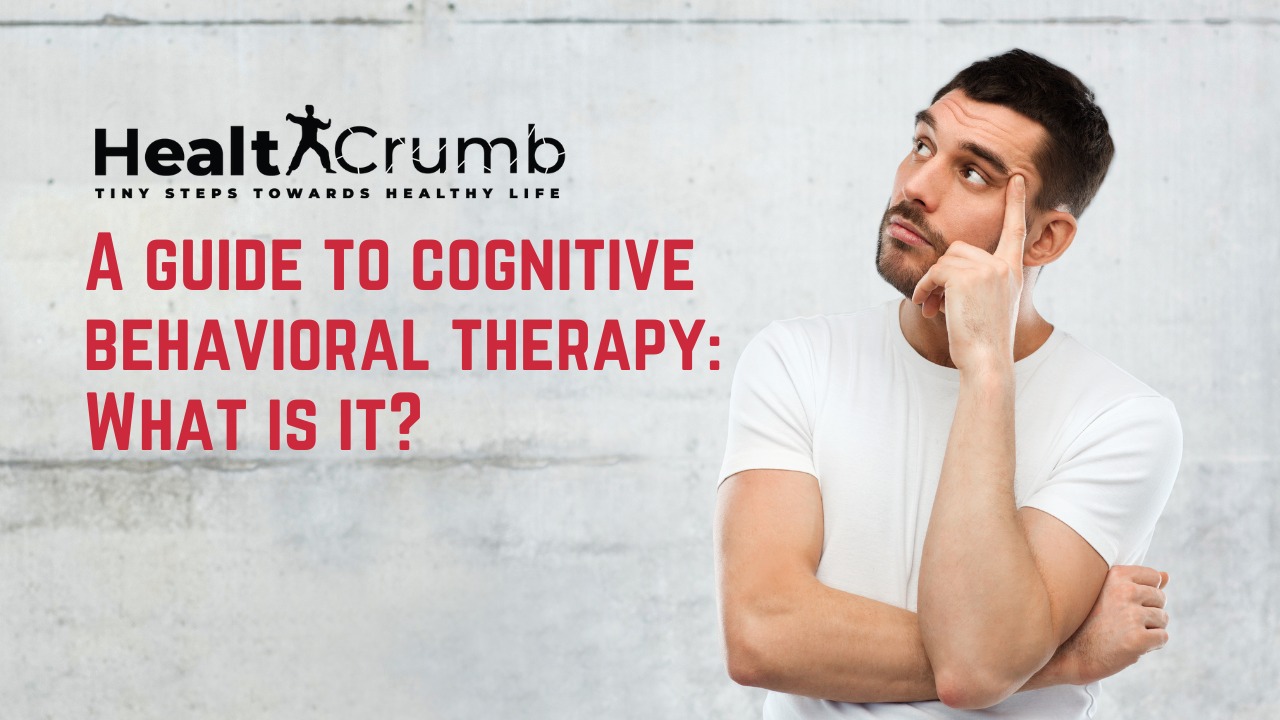Cognitive behavioral therapy (CBT) is a type of psychotherapy that helps people change the way they think and behave. It is based on the theory that individuals have thoughts, feelings, and behaviors that are shaped by their thoughts and memories. It helps people to identify and change their thoughts and behaviors that are causing problems.
The therapy is usually delivered in a series of sessions. During each session, the therapist helps the patient to identify and change patterns of thoughts, feelings, and behaviors that are causing problems. The goal of cognitive behavioral therapy is to help the patient develop new habits or strategies that will improve their life.
CBT is often used to treat a variety of issues, including anxiety, depression, substance abuse, and relationship problems. It is considered to be a very effective treatment option for many mental health issues.
What is cognitive behavioral therapy?
Cognitive behavioral therapy (CBT) is a type of treatment that helps people learn and use positive thinking to change their behavior. The therapy is based on the theory that thoughts and behaviors are linked, and that changing one can change the other. It typically involves working with a therapist to identify and change patterns of thought and behavior that are responsible for problems. CBT is often used to treat depression, chronic stress & anxiety, eating disorders, substance abuse, and other mental health problems.
It is usually effective for treating these problems, but it does not work for everyone. It may take several sessions to see changes in behavior, and it is important to continue treatment even after the symptoms of the problem have subsided.
There is some evidence that cognitive behavioral therapy may be helpful for treating chronic pain, though more research is needed.
CBT is a short-term treatment approach that typically lasts between 12 and 16 sessions. Sessions are typically divided into four parts:
- Assessment: This section helps the therapist learn about the patient’s symptoms and history.
- Planning: The therapist creates a plan of action based on the assessment results.
- Intervention: The therapist works with the patient to change their thoughts and behaviors.
- Follow-up: The therapist provides support and advice after the intervention is complete.
What are the goals of CBT?
Cognitive behavioral therapy (CBT) is a treatment that helps people change their behavior. The therapy has two goals:
- to improve the person’s symptoms
- to prevent future problems
The main goal of cognitive behavioral therapy is to help the person change his or her thoughts and beliefs about the problem. This can be difficult, but it is essential for long-term success. This therapy also teaches the person how to manage his or her emotions and deal with stress. This can help reduce the symptoms of the problem and prevent future problems from occurring.
To improve the person’s symptoms, CBT focuses on changing how the person thinks and feels about their situation. To prevent future problems, cognitive behavioral therapy teaches the person how to manage their emotions and handle stress.
Cognitive behavioral therapy is usually used to treat anxiety, depression, and other mental health problems. Some people also use this therapy to improve their ability to focus and think clearly, reduce substance abuse, and manage stress.
How does cognitive behavioral therapy work?
People can change their negative behaviors and thoughts by using cognitive behavioral therapy. It is based on the idea that thoughts and behaviors are linked. So, by changing how people think about their problems and what they do to solve them, they can improve their mental health. It has also been found to be effective in treating a variety of mental health conditions, including anxiety, depression, obsessive-compulsive disorder, panic disorder, and post-traumatic stress disorder.
Which symptoms are treated with cognitive behavioral therapy?
Cognitive behavioral therapy is a type of psychotherapy that is used to treat a variety of symptoms, including anxiety, depression, stress, and substance abuse. It typically focuses on changing the thinking patterns that lead to these symptoms. CBT can help people learn to understand and manage their thoughts, emotions, and behaviors. It can also help them develop new habits or strategies for regulating these things.
Some common treatments that are used in cognitive behavioral therapy include:
- Exposure therapy: This type of therapy helps people learn to tolerate anxiety-producing situations. People are typically exposed to the things or situations that make them anxious, one at a time. As they become more comfortable with these exposures, the exposure therapy can be gradually increased.
- Situational management therapy: This type of therapy helps people learn to manage stress and anxiety by changing their environment and surroundings. People might be taught to avoid high-stress situations or to take small steps to reduce their overall stress levels.
- Interpersonal therapy: This type of therapy helps people learn to communicate effectively with others. People might be taught how to identify and manage emotions, how to set boundaries with others, or how to build positive relationships.
Some common symptoms that are treated with CBT include:
- Anxiety: CBT can help reduce anxiety by teaching patients how to manage their thoughts and feelings.
- Depression: CBT can help improve mood by teaching patients how to identify and change their negative thoughts.
- Stress: CBT can help reduce stress by teaching patients how to manage their emotions.
- Substance Abuse: CBT can help address substance abuse by teaching patients how to change their behavior.
- Sleep Disorders: CBT can help improve sleep by teaching patients how to change their habits.
How long does it take to see results from CBT?
Cognitive behavioral therapy (CBT) is a form of psychotherapy that can help people manage their emotions and behaviors. The therapy is typically effective in treating a wide range of mental health issues, including anxiety, depression, and obsessive-compulsive disorder. However, it can take some time to see results. Here are some tips on how long it may take to see benefits from cognitive behavioral therapy:
It typically takes around 16 sessions for CBT to be effective. However, there is evidence that this number may vary depending on the individual’s symptoms and history.
CBT may also need to be continued over an extended period of time for maximum benefits. A review of CBT research found that people who received treatment for at least 12 months were more likely to experience lasting changes than those who received shorter-term treatment.
If you’re looking for relief from your symptoms, it’s important to give CBT a chance. The longer you wait, the harder it will be to achieve lasting change.
If you’re considering CBT as a treatment option, be sure to speak with your doctor about the best way to proceed.
If you are experiencing major depression, the time it takes to see significant improvement can be lengthy. However, for most people who have mild to moderate depression, the time it takes for benefits to emerge can vary greatly. Some people may only require a few sessions before feeling noticeably better, while others may need several months of treatment.
Conclusion
Cognitive behavioral therapy (CBT) is a type of psychotherapy that helps people learn and use positive thinking to change their behavior. It is based on the theory that thoughts and behaviors are linked, and that changing one can change the other. It typically involves working with a therapist to identify and change patterns of thought and behavior that are responsible for problems. This therapy is often used to treat anxiety, depression, chronic stress, eating disorders, substance abuse, and other mental health problems.
The goals of cognitive behavioral therapy are to improve the person’s symptoms and to prevent future problems. To improve the person’s symptoms, it focuses on changing how the person thinks and feels about their situation. To prevent future problems, cognitive behavioral therapy teaches the person how to manage their emotions and handle stress.
Some people also use cognitive behavioral therapy to improve their ability to focus and think clearly, reduce substance abuse, and manage stress.
CBT is usually effective in treating a wide range of mental health issues, including anxiety, depression, and obsessive-compulsive disorder. However, it can take some time to see results.
If you’re looking for relief from your symptoms, it’s important to give CBT a chance. The longer you wait, the harder it will be to achieve lasting change. If you’re considering cognitive behavioral therapy as a treatment option, be sure to speak with your doctor about the best way to proceed.



